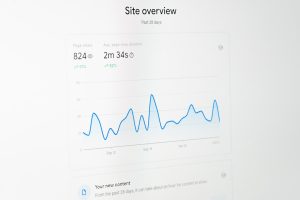
As modern B2B sales processes continue to evolve, the need for more effective prospecting strategies has become increasingly critical. The challenge is not just reaching potential customers, but identifying those who are most likely to convert and engage meaningfully with your solution. This is where business profiling becomes an essential tool in the sales arsenal. By leveraging clear definitions of your Ideal Customer Profile (ICP), tracking sales triggers, and delivering personalized messaging, your organization positions itself to sell smarter, not harder.
Understanding the Ideal Customer Profile (ICP)
The first step to meaningful business profiling is defining your Ideal Customer Profile. The ICP is a detailed description of companies that would benefit the most from your product or service and are also most likely to generate the highest lifetime value.
Unlike customer personas, which focus on the individuals within companies, an ICP defines the organizational characteristics of your ideal accounts. This targeted approach improves sales efficiency by allocating resources to prospects that fit a predetermined standard of high potential.
To define your ICP, consider the following dimensions:
- Firmographics – Industry, company size, annual revenue, geographic location
- Technographics – Tools, platforms, or systems already in use
- Behavioral Indicators – Online behavior, content consumption, previous interaction with your brand
- Customer Success Attributes – Characteristics of current high-LTV customers with strong product adoption
Instead of casting a wide net, a defined ICP ensures you’re targeting accounts where sales and marketing efforts will have the highest returns.

Using Triggers to Identify Sales Opportunities
While the ICP tells you who to target, triggers tell you when to reach out. Triggers are time-sensitive signals that provide context for why a prospect might be open to a conversation or purchase. Monitoring these real-time changes helps sales teams be proactive rather than reactive.
Common sales triggers include:
- Leadership Changes – New C-level executives often look to implement changes and reevaluate vendors
- Funding Events – Companies that raise capital typically have expansion on the horizon
- Hiring Trends – Spike in job postings can signal growth or a strategic shift
- Product Launches – Introducing new products may open up new needs or pain points
- Regulatory Shifts – Industry-specific compliance changes can create immediate buying urgency
By integrating technology such as intent-data providers and sales enrichment tools, organizations can track these signals at scale. The result: sales teams stay one step ahead, entering conversations with timely relevance.

Crafting Messaging Based on ICP and Triggers
Once you know who to target and when to engage them, the third pillar of business profiling comes into play: personalized messaging. This is where the rubber meets the road. A well-thought-out message shows the prospect that you understand their context and have a relevant solution to offer.
Effective sales messaging should be:
- Contextual – Clearly relate to the trigger that prompted the outreach
- Value-Focused – Emphasize outcomes and ROI over features
- Concise – Use the limited attention span of decision-makers wisely
- Tailored – Leverage ICP traits to align language, tone, and focus areas
For example, if your ICP is mid-market SaaS companies and your trigger is a recent funding announcement, a cold email might look like this:
Hi [First Name],
Congrats on your recent Series B – exciting times! We work with growing SaaS teams like yours to help reduce churn and accelerate onboarding for new hires. Given your expansion, this could be especially relevant. Would you be open to a 15-minute conversation next week?
This brief message aligns with the ICP, responds to the trigger, and offers a clear value proposition with a low-friction CTA.
Combining ICP, Triggers, and Messaging into a Repeatable System
When these three elements come together, they form a powerful, scalable system for sales prospecting. Here’s how to operationalize it across your go-to-market team:
- Document Your ICPs – Maintain segment-specific ICPs and keep them updated with input from sales, marketing, and customer success.
- Set Up Trigger Monitoring – Use tools like LinkedIn Sales Navigator, Crunchbase, and intent-data platforms to automatically surface relevant events.
- Centralize Account Intelligence – Leverage your CRM and third-party enrichment tools to ensure a 360-degree view of each target account.
- Train on Message Frameworks – Develop modular scripts or templates that reps can adapt based on triggers and ICP characteristics.
- Measure and Iterate – Track which combinations of ICP + trigger + message yield the best response and conversion rates.
When ICP alignment, trigger responsiveness, and thoughtful messaging are part of the same workflow, the sales process becomes both efficient and effective.
The Benefits of Business Profiling in Sales
Organizations that implement business profiling experience multiple advantages:
- Higher Conversion Rates – Targeting the right prospects with the right messaging at the right time improves engagement
- Shorter Sales Cycles – Focusing on high-fit accounts reduces wasted effort on unqualified leads
- Greater Team Alignment – Sales and marketing sync on definitions and ideal segments
- Improved Forecast Accuracy – Better data and qualification lead to more predictable pipelines
Moreover, with resources increasingly constrained, teams that embrace business profiling can do more with less—focusing their energy on leads that matter most.
Conclusion
In an increasingly competitive market, guessing your way through prospecting is no longer an option. Business profiling brings structure, clarity, and focus to the sales process by tying together who to target (ICP), when to reach out (triggers), and what to say (messaging). When properly executed, it transforms how your team identifies opportunities and positions itself in the buyer’s journey.

By embedding ICP, trigger detection, and custom messaging into your sales strategy, your team will not only gain a competitive edge but increase the likelihood of building lasting customer relationships. In today’s data-driven world, those who know their customers best—and speak to them on their terms—will win.






